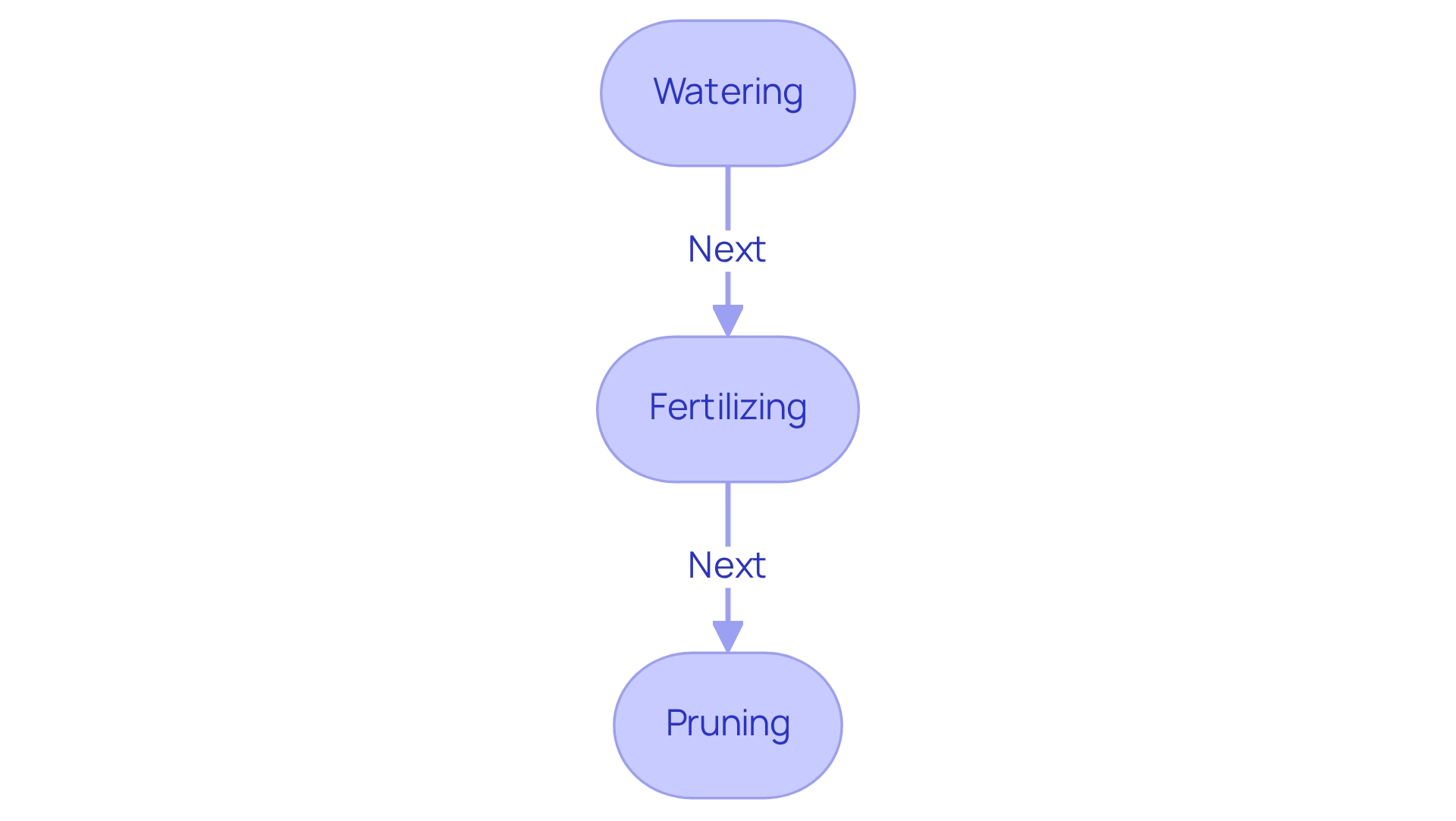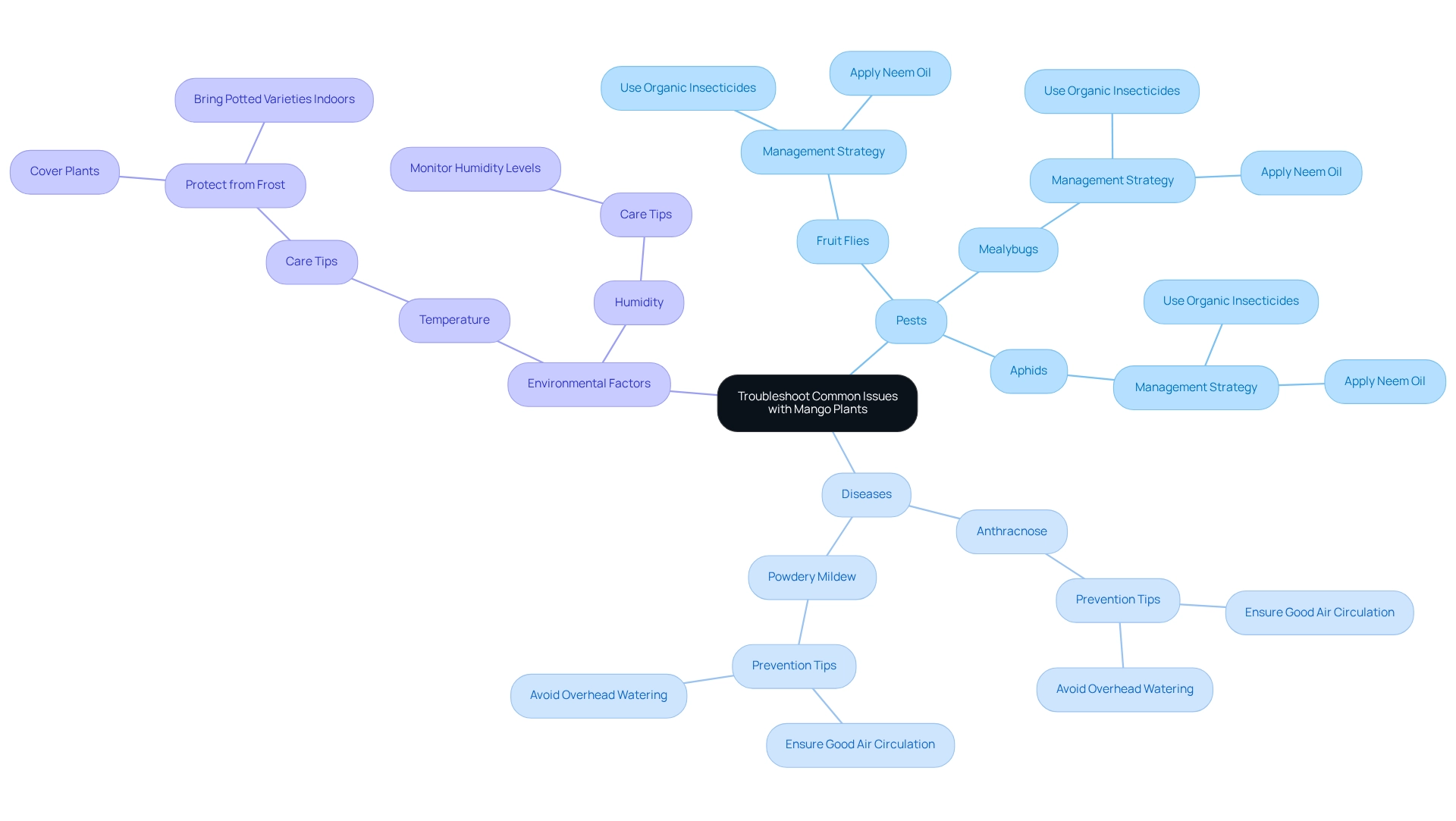This article serves as a heartfelt guide to planting and nurturing Philippine mango trees, addressing the common challenges many gardeners face. Recognizing the significance of a suitable climate and proper soil conditions, it emphasizes the essential maintenance practices that can lead to thriving trees.
Through detailed steps, such as proper planting techniques, consistent watering, fertilizing, and effective pest management, we can cultivate not just trees, but a rewarding gardening experience. Each of these practices plays a vital role in ensuring the health and growth of your mango trees, allowing you to witness their beauty flourish.
Imagine the joy of seeing your trees thrive, knowing you’ve provided them with the care they need. By following these nurturing steps, you're not just gardening; you're creating a vibrant connection with nature. Let's embark on this journey together, nurturing our gardens and hearts alike.
Ever dreamed of harvesting sweet, golden mangoes from your own backyard?
The Philippine (Filipino) Mango Tree is one of the most flavorful and beloved tropical varieties. If you're ready to bring tropical abundance to your garden, this guide walks you through every step: from planting and care to solving common issues.
📍 Shop the Philippine Mango Tree (Grafted) — shipped directly from Florida with expert care by Everglades Farm.
n the lush landscapes of the Philippines, the mango tree stands as a beloved symbol of tropical abundance, flourishing in warm climates and rich soils. Have you ever considered the joy of cultivating these trees? It requires a deep understanding of their specific growing conditions, from the ideal temperature range to the vital importance of sunlight and soil quality. As you embark on the journey of planting and nurturing mango trees, you will encounter a series of essential steps that pave the way for a fruitful harvest.
This comprehensive guide invites you to delve into the intricacies of successfully growing mango trees. Together, we will explore everything from planting techniques and maintenance practices to troubleshooting common issues that may arise. Whether you are a novice gardener or someone with more experience, the insights provided here will help you celebrate the sweet rewards of diligent care and attention. Let’s cultivate a bountiful mango harvest together!
1. Understand the Growing Conditions for Philippine Mango Trees
The Philippine mango tree and other fruit-bearing plants truly thrive in tropical and subtropical climates, needing warm temperatures between 21°C and 27°C (70°F to 80°F). The Philippine mango tree flourishes best in well-draining, loamy soil that is rich in organic matter, ideally with a pH level between 6.0 and 7.5. It's essential to ensure that your planting location for the Philippine mango tree receives complete sunlight for at least 6 to 8 hours each day, as the Philippine mango tree is happiest in sunny conditions. Additionally, consider the spacing; planting the fruit-bearing plants at least 10 to 15 feet apart allows them to grow expansively without crowding.
To maximize your gardening success, why not explore Everglades Farm's Fast-Growing Trees collection? This selection features specially chosen varieties that yield fruit quickly and adapt wonderfully to home gardens. When you combine these with our
high-quality fertilizers, formulated to deliver vital nutrients and encourage healthy development, you can create an optimal growing environment for your plants. Remember, every step you take in nurturing your garden brings you closer to a fruitful harvest, and we're here to support you on this rewarding journey.
2. Plant the Mango Tree: Step-by-Step Instructions
-
Choose the Right Time: Planting a Philippine mango tree sapling during the dry season, typically between late winter and early spring, is ideal. This timing not only benefits the Philippine mango tree but also supports the growth of other tropical fruits like soursop and passion fruit, creating optimal conditions for flourishing plants.
-
Prepare the Planting Hole: When you dig a hole, make sure it is three times wider and twice as deep as the root ball of your tree. This allows for proper root expansion, which is crucial for both mango and soursop trees.
-
Ground Preparation: As you prepare the soil, mix the excavated earth with organic compost to enhance its fertility. For soursop and passion plants, ensuring well-draining soil is essential, as they thrive in rich, loamy conditions.
-
Position the Philippine mango tree: Center the tree in the hole, ensuring that the top of the root ball sits slightly above ground level. This practice helps prevent water accumulation around the trunk, benefiting not just the Philippine mango tree but also soursop and passion fruit trees.
-
Backfill the Hole: Gently fill the hole with your prepared earth mixture, tamping it down to eliminate air pockets. This step is vital for establishing a strong foundation for both types of trees.
-
Water Thoroughly: After planting, give the plant a deep watering to help settle the soil around the roots. For soursop and passion plants, consistent watering during their early growth stage is essential.
-
Mulch: Apply a layer of mulch around the base of the plant to retain moisture and suppress weeds. This is particularly important in tropical environments where evaporation can be significant.
By following these guidelines, you will ensure that your fruit plants are well-positioned and have a robust start. Remember, gardening is a journey, and with care and attention, you can successfully cultivate the Philippine mango tree as well as soursop and passion fruit plants.
3. Maintain Your Mango Tree: Watering, Fertilizing, and Pruning
-
Watering: Young philippine mango tree plants thrive on consistent hydration, especially during dry spells. Water them deeply once or twice a week, allowing the soil to dry out in between. While mature plants are more drought-resistant, they still appreciate deep watering during prolonged dry periods.
-
Fertilizing: To nurture your fruit plant, apply a balanced fertilizer rich in potassium three times a year. This will encourage robust growth and fruitful yields. Timing is key: fertilize in early spring, late spring, and early summer.
-
Pruning: After harvest, take a moment to trim your fruit-bearing plant each year. This simple act removes dead or infected limbs and shapes the plant, promoting better air circulation and sunlight penetration—both essential for producing healthy fruit.
By embracing these nurturing care methods, you can ensure that your philippine mango tree remains strong and fruitful throughout its life. Remember, gardening is a journey we share, and with each step, you’re nurturing not just your plants but your own connection to nature.
4. Troubleshoot Common Issues: Pests, Diseases, and Environmental Factors
- Pests: If you’ve ever noticed pesky visitors on your mango plants, you’re not alone. Common nuisances like fruit flies, mealybugs, and aphids can be quite bothersome. It’s important to frequently examine your plants for signs of infestation. You can manage these pests effectively with organic insecticides or neem oil, allowing your plants to thrive.
- Mango plants can also face challenges from ailments such as anthracnose and powdery mildew. To minimize the risk of disease, ensure good air circulation and avoid overhead watering. If you do encounter diseases, don’t hesitate to apply appropriate fungicides as needed. As N. E. Stevens and R. B. Stevens remind us, "We do not view plant pathology as an isolated discipline but as one of several significant methods to the broader challenge of providing humanity with sufficient essential plant material." This highlights the importance of addressing these issues in caring for your fruit-bearing plants.
- Environmental Factors: Keeping an eye on environmental conditions like temperature and humidity is crucial. Mango plants are sensitive to frost, so it’s wise to safeguard them during cold snaps by covering them or bringing potted varieties indoors. By being vigilant and proactive, you can effectively manage these common issues and keep your mango tree healthy. Understanding the difference between fundamental and applied research in plant pathology can further inform your approach to these challenges, empowering you as a gardener.
Conclusion
The journey of cultivating mango trees in the Philippines is not just about gardening; it’s a rewarding and enriching experience. By understanding the specific growing conditions—such as ideal temperature, soil requirements, and the necessity of ample sunlight—you lay the groundwork for success. Each detail matters, and proper planting techniques, including the right timing and soil preparation, create a strong foundation for what lies ahead.
Ongoing maintenance practices are vital for nurturing healthy mango trees. Regular watering, strategic fertilization, and thoughtful pruning are essential to ensure that these trees not only survive but truly thrive, leading to bountiful harvests. Have you ever faced challenges with pests or diseases? Being proactive in troubleshooting these common issues can safeguard the health of your trees, allowing you to enjoy a fruitful and satisfying gardening experience.
Ultimately, cultivating mango trees is a celebration of patience, care, and the joy of reaping the fruits of your labor. By following the guidelines outlined in this guide, both novice gardeners and seasoned horticulturists can savor the sweet rewards that come from nurturing these vibrant symbols of tropical abundance. Embracing the art of mango cultivation is a beautiful step toward fostering a deeper connection with nature and enjoying the delicious fruits that result from dedicated care.
Ready to Grow Your Own Philippine Mango Tree?
Start your tropical gardening journey with a Philippine Mango Tree (Grafted) from Everglades Farm.
Explore more collections:
Frequently Asked Questions
What climate is ideal for growing the Philippine mango tree?
The Philippine mango tree thrives in tropical and subtropical climates with warm temperatures between 21°C and 27°C (70°F to 80°F).
What type of soil is best for the Philippine mango tree?
It flourishes best in well-draining, loamy soil that is rich in organic matter, ideally with a pH level between 6.0 and 7.5.
How much sunlight does the Philippine mango tree need?
The Philippine mango tree requires complete sunlight for at least 6 to 8 hours each day to thrive.
What is the recommended spacing for planting fruit-bearing plants?
It is recommended to plant fruit-bearing plants at least 10 to 15 feet apart to allow for expansive growth without crowding.
How can I enhance my gardening success with the Philippine mango tree?
You can explore Everglades Farm's Fast-Growing Trees collection, which features varieties that yield fruit quickly and adapt well to home gardens. Using high-quality fertilizers can also help deliver vital nutrients for healthy plant development.







0 comments